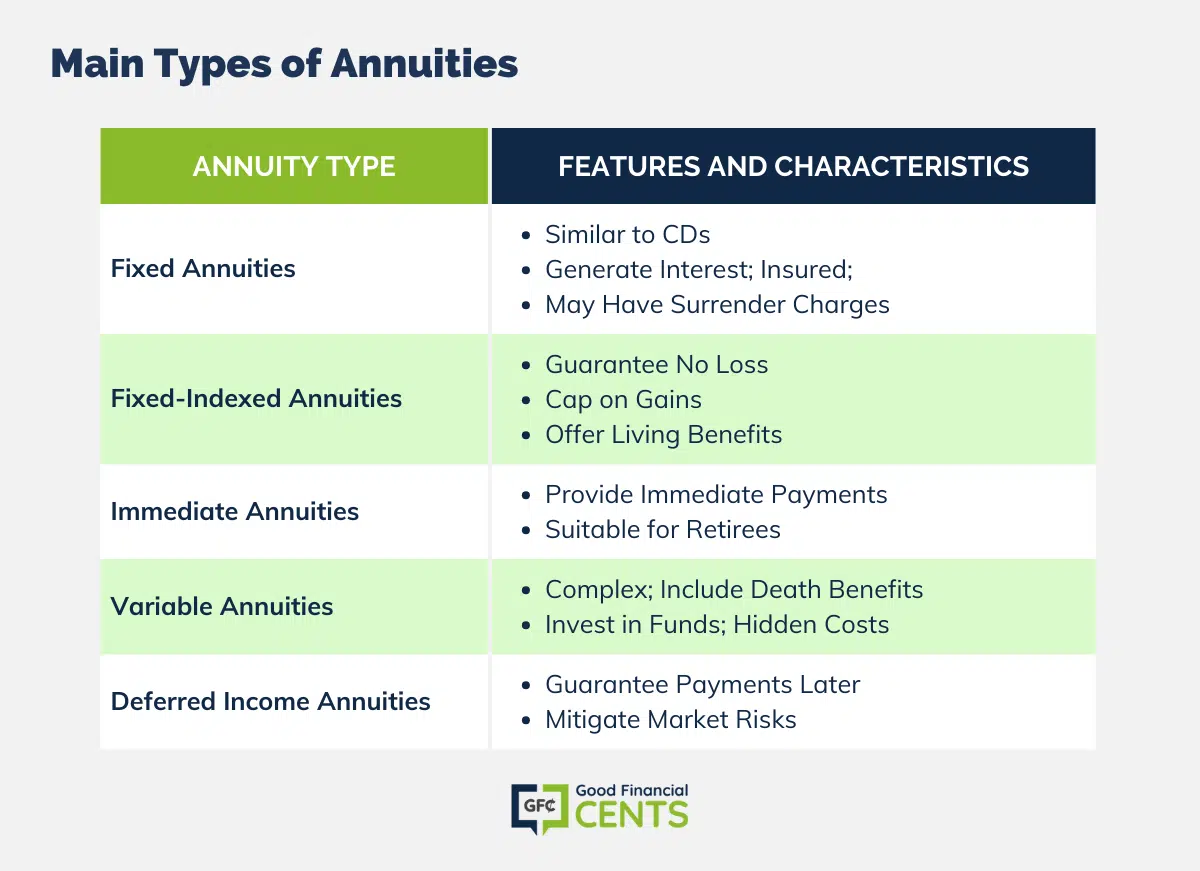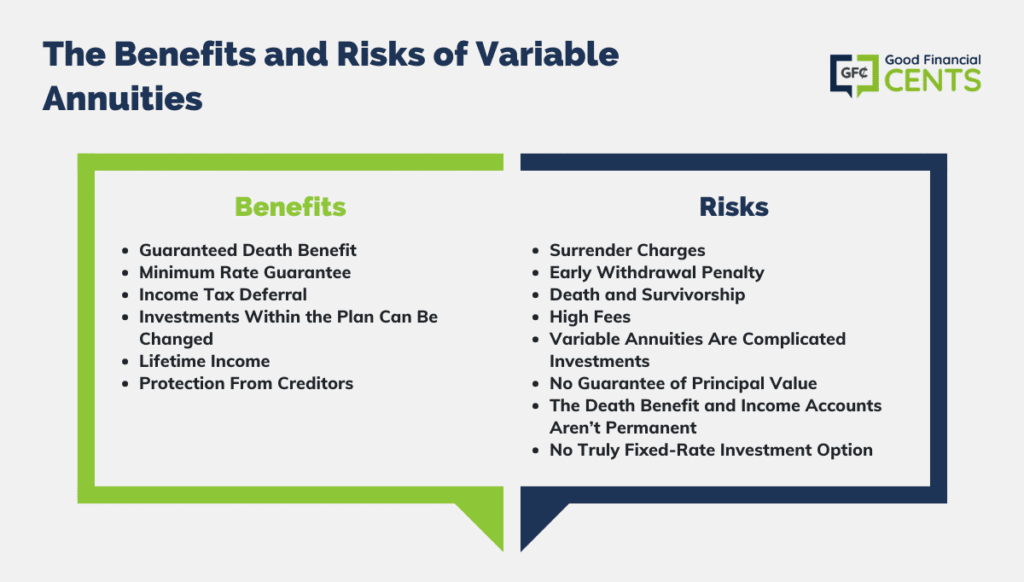All Categories
Featured
Table of Contents
Equally as with a fixed annuity, the proprietor of a variable annuity pays an insurance provider a round figure or collection of settlements for the promise of a collection of future repayments in return. As pointed out over, while a taken care of annuity grows at an assured, constant rate, a variable annuity expands at a variable rate that depends upon the performance of the underlying investments, called sub-accounts.

During the buildup stage, properties bought variable annuity sub-accounts grow on a tax-deferred basis and are strained just when the agreement owner withdraws those earnings from the account. After the buildup stage comes the earnings stage. Over time, variable annuity assets must theoretically increase in value until the agreement owner determines she or he wish to begin taking out cash from the account.
One of the most significant problem that variable annuities usually existing is high expense. Variable annuities have numerous layers of costs and expenses that can, in accumulation, create a drag of as much as 3-4% of the agreement's value yearly. Below are the most typical fees linked with variable annuities. This cost makes up the insurance firm for the risk that it thinks under the terms of the agreement.
Highlighting the Key Features of Long-Term Investments A Comprehensive Guide to Investment Choices Defining Immediate Fixed Annuity Vs Variable Annuity Pros and Cons of Pros And Cons Of Fixed Annuity And Variable Annuity Why Choosing the Right Financial Strategy Matters for Retirement Planning Retirement Income Fixed Vs Variable Annuity: Simplified Key Differences Between Different Financial Strategies Understanding the Key Features of Long-Term Investments Who Should Consider Strategic Financial Planning? Tips for Choosing the Best Investment Strategy FAQs About Fixed Income Annuity Vs Variable Annuity Common Mistakes to Avoid When Choosing a Financial Strategy Financial Planning Simplified: Understanding Your Options A Beginner’s Guide to Smart Investment Decisions A Closer Look at How to Build a Retirement Plan
M&E expenditure costs are calculated as a portion of the contract value Annuity providers pass on recordkeeping and various other administrative costs to the agreement owner. This can be in the form of a level annual charge or a percent of the agreement value. Administrative costs may be included as part of the M&E threat cost or might be examined separately.
These costs can vary from 0.1% for passive funds to 1.5% or even more for proactively handled funds. Annuity agreements can be personalized in a number of means to offer the particular needs of the agreement owner. Some usual variable annuity cyclists include ensured minimal accumulation benefit (GMAB), ensured minimum withdrawal benefit (GMWB), and assured minimum earnings advantage (GMIB).

Variable annuity contributions offer no such tax reduction. Variable annuities have a tendency to be extremely ineffective lorries for passing wide range to the future generation since they do not enjoy a cost-basis change when the original agreement owner dies. When the proprietor of a taxable investment account dies, the cost bases of the financial investments held in the account are gotten used to reflect the market rates of those financial investments at the time of the owner's death.
Understanding Financial Strategies Key Insights on Your Financial Future Breaking Down the Basics of Investment Plans Pros and Cons of Fixed Index Annuity Vs Variable Annuities Why Annuities Variable Vs Fixed Is a Smart Choice Fixed Annuity Vs Variable Annuity: Explained in Detail Key Differences Between Variable Annuities Vs Fixed Annuities Understanding the Risks of Long-Term Investments Who Should Consider Strategic Financial Planning? Tips for Choosing the Best Investment Strategy FAQs About Planning Your Financial Future Common Mistakes to Avoid When Choosing a Financial Strategy Financial Planning Simplified: Understanding Fixed Income Annuity Vs Variable Growth Annuity A Beginner’s Guide to Smart Investment Decisions A Closer Look at Variable Annuities Vs Fixed Annuities
For that reason, successors can acquire a taxed financial investment profile with a "fresh start" from a tax perspective. Such is not the instance with variable annuities. Investments held within a variable annuity do not receive a cost-basis change when the initial owner of the annuity dies. This means that any gathered latent gains will certainly be passed on to the annuity owner's beneficiaries, together with the associated tax obligation worry.
One substantial concern connected to variable annuities is the potential for problems of interest that may feed on the part of annuity salespeople. Unlike a financial advisor, that has a fiduciary task to make investment decisions that profit the client, an insurance broker has no such fiduciary responsibility. Annuity sales are extremely rewarding for the insurance professionals who sell them as a result of high ahead of time sales commissions.

Many variable annuity agreements have language which places a cap on the percent of gain that can be experienced by specific sub-accounts. These caps prevent the annuity owner from fully taking part in a section of gains that can otherwise be appreciated in years in which markets create considerable returns. From an outsider's perspective, presumably that investors are trading a cap on financial investment returns for the abovementioned ensured floor on financial investment returns.
As kept in mind over, give up charges can significantly restrict an annuity owner's capacity to move possessions out of an annuity in the very early years of the contract. Additionally, while the majority of variable annuities allow contract owners to withdraw a specified quantity throughout the build-up phase, withdrawals yet amount normally result in a company-imposed cost.
Withdrawals made from a set rate of interest investment alternative could likewise experience a "market price change" or MVA. An MVA changes the value of the withdrawal to show any changes in rate of interest prices from the time that the cash was bought the fixed-rate option to the moment that it was taken out.

On a regular basis, also the salesmen that offer them do not fully understand just how they function, and so salesmen often take advantage of a customer's feelings to sell variable annuities instead of the values and suitability of the items themselves. Our team believe that financiers must fully understand what they own and exactly how much they are paying to have it.
Highlighting the Key Features of Long-Term Investments A Closer Look at How Retirement Planning Works Defining the Right Financial Strategy Advantages and Disadvantages of Fixed Income Annuity Vs Variable Growth Annuity Why Choosing the Right Financial Strategy Is a Smart Choice How to Compare Different Investment Plans: A Complete Overview Key Differences Between Fixed Interest Annuity Vs Variable Investment Annuity Understanding the Risks of Long-Term Investments Who Should Consider Strategic Financial Planning? Tips for Choosing the Best Investment Strategy FAQs About Planning Your Financial Future Common Mistakes to Avoid When Planning Your Retirement Financial Planning Simplified: Understanding Fixed Vs Variable Annuity A Beginner’s Guide to Variable Annuities Vs Fixed Annuities A Closer Look at Deferred Annuity Vs Variable Annuity
Nevertheless, the same can not be claimed for variable annuity properties kept in fixed-rate financial investments. These possessions legally belong to the insurance provider and would for that reason be at danger if the firm were to fail. Any assurances that the insurance coverage firm has actually concurred to give, such as an ensured minimal income advantage, would certainly be in concern in the event of a service failing.
Possible buyers of variable annuities must recognize and consider the financial condition of the providing insurance business prior to getting in into an annuity contract. While the advantages and drawbacks of different kinds of annuities can be debated, the genuine issue bordering annuities is that of suitability. Simply put, the concern is: that should possess a variable annuity? This inquiry can be difficult to respond to, given the myriad variants available in the variable annuity world, but there are some standard standards that can aid financiers choose whether annuities should play a function in their economic plans.
After all, as the claiming goes: "Caveat emptor!" This post is prepared by Pekin Hardy Strauss, Inc. Fixed annuities vs market risk. ("Pekin Hardy," dba Pekin Hardy Strauss Wide Range Administration) for informative objectives only and is not intended as an offer or solicitation for organization. The info and information in this article does not make up legal, tax, audit, investment, or various other specialist advice
Table of Contents
Latest Posts
Breaking Down Fixed Index Annuity Vs Variable Annuities A Comprehensive Guide to Fixed Index Annuity Vs Variable Annuity Breaking Down the Basics of Investment Plans Pros and Cons of Annuity Fixed Vs
Decoding How Investment Plans Work Everything You Need to Know About Fixed Annuity Vs Equity-linked Variable Annuity What Is Fixed Annuity Vs Variable Annuity? Benefits of Choosing the Right Financial
Decoding How Investment Plans Work A Comprehensive Guide to Annuity Fixed Vs Variable What Is the Best Retirement Option? Pros and Cons of Fixed Interest Annuity Vs Variable Investment Annuity Why Pro
More
Latest Posts